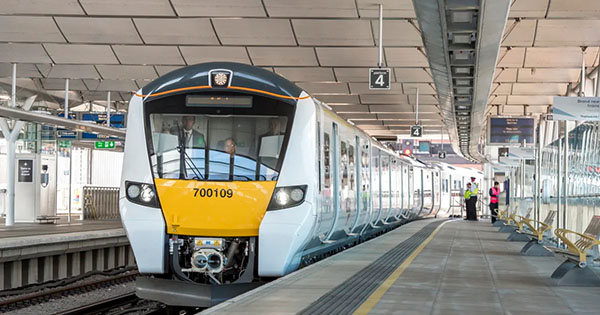Thameslink core

Relevant RTS critical priority(ies):
Optimised train operation
A doubling of passenger numbers in twenty years is evidence of the pressure on capacity for Thameslink, the Victorian-era north-south corridor across London. The Thameslink Programme instigated a number of changes, lengthening platforms, addressing pathing and junction conflicts, building new, bigger stations, a new connection to the East Coast Main Line; the remaining change was to go from 16 trains per hour to 24, a 50% increase in capacity.
To enable this and deliver high reliability for such a high throughput, a new means to operate the railway automatically through the central core from St Pancras to Blackfriars – Automatic Train Operation (ATO) as is commonly used on metro systems – was required, to permit the use of optimised and consistent braking and acceleration rates, with trains closing up and consistently maintaining the shortest possible separation.
Three companies – Network Rail, Siemens (supplier of both the Class 700 train fleet and the signalling system) and Govia Thameslink Railway (GTR) – collaborated to develop the ATO system, starting with the Operational Concept. The route was modelled and an integration testing lab set up to test the interaction and integration between trackside and train-borne components in given operational scenarios, then on a full-scale test track at the ETCS National Integration Facility, commonly referred to as ENIF.
ATO came into use in March 2018 on the core route, the first application of ATO and ETCS worldwide. The southbound 8-car Thameslink train with its in-cab signalling brought itself to a halt automatically at London St Pancras International at 13:53, having transitioned into ETCS Level 2 Full Supervision and then ATO on its approach from Kentish Town. With the driver undertaking safety checks, closing the doors and then selecting ATO again, the train continued under automatic control through Farringdon, City Thameslink and London Blackfriars, with the driver performing the same duties at each of the stations. It finally transitioned out of the system on its exit from London Blackfriars, headed towards Elephant & Castle.
Back



